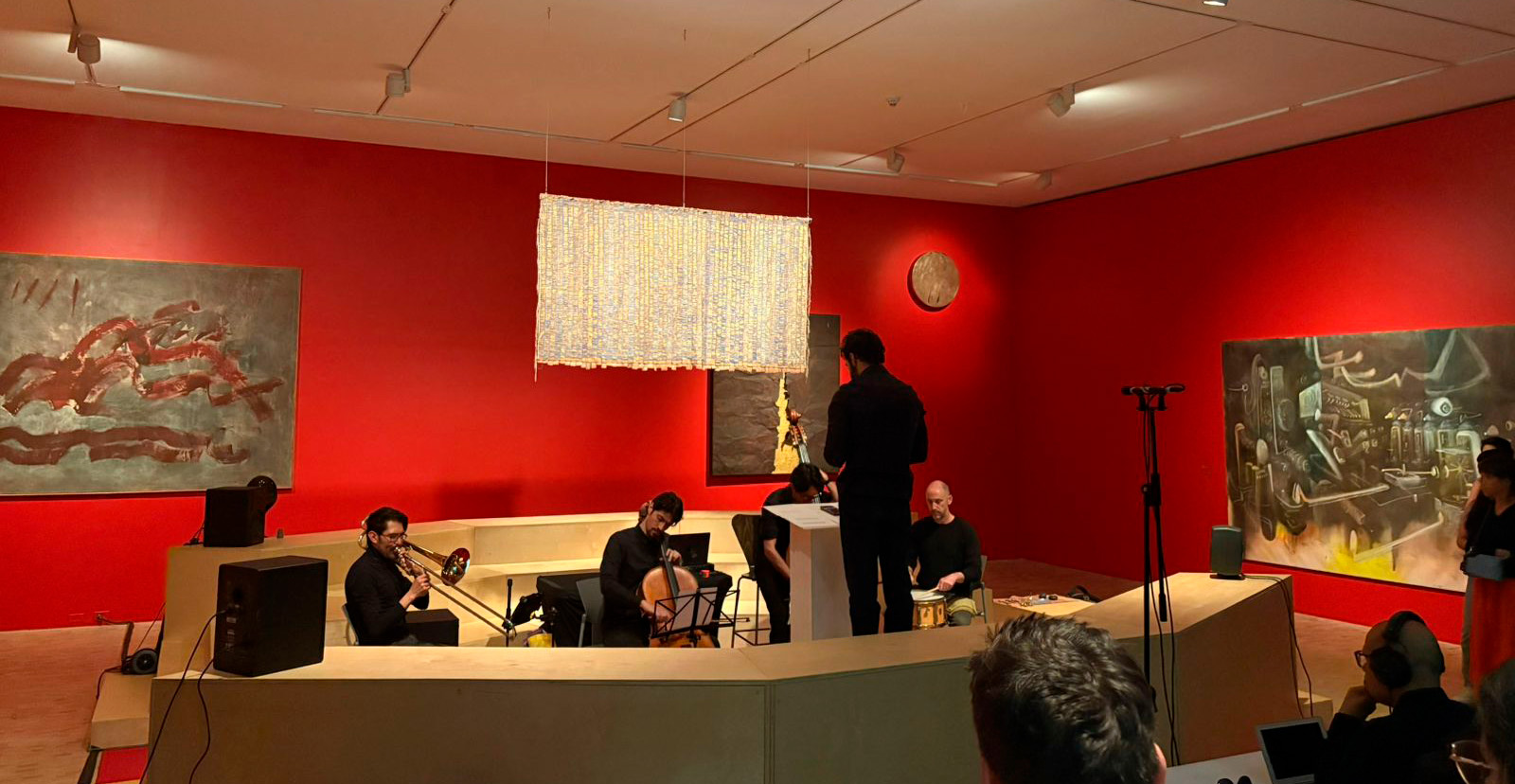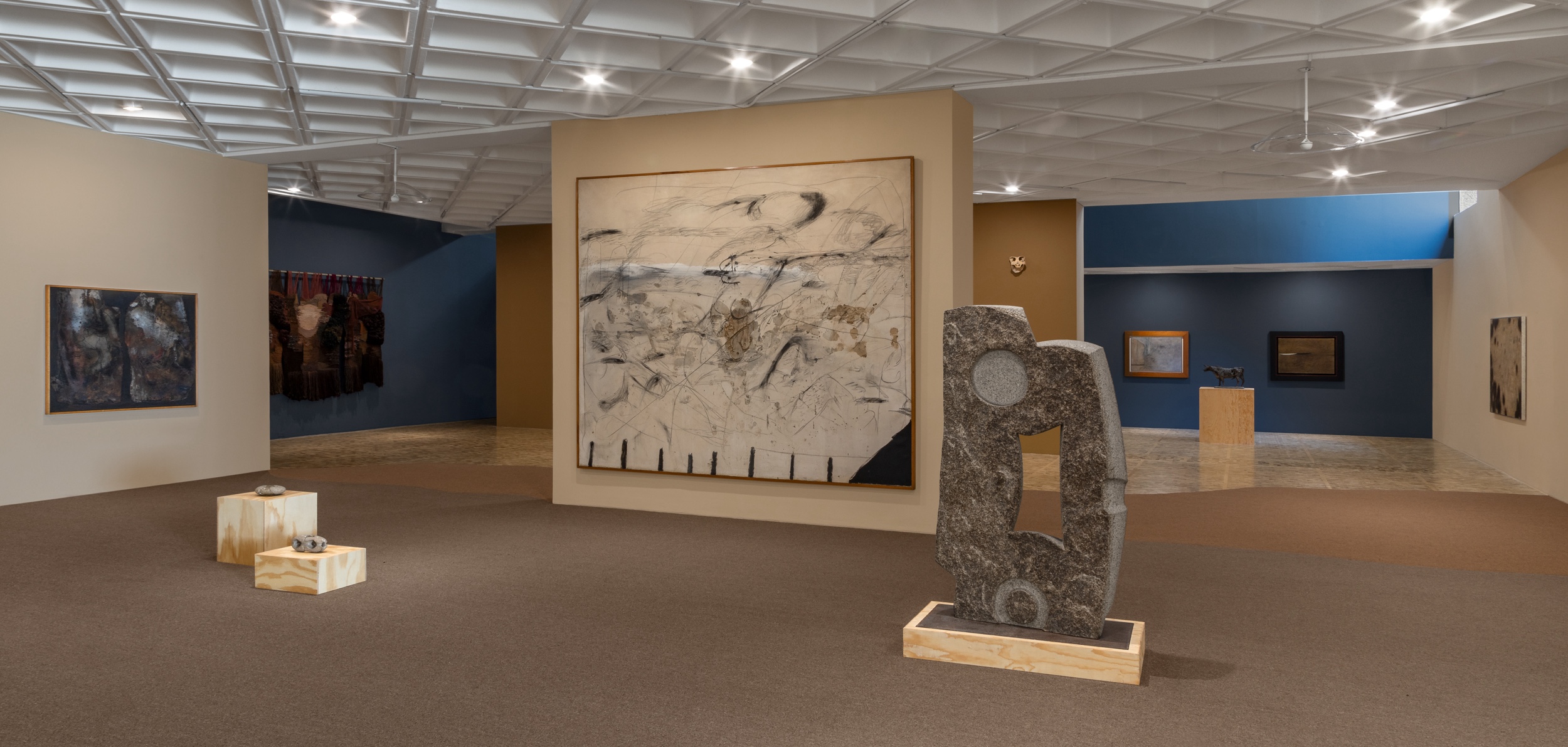We advise arriving 15 minutes early to ensure a spot.
The Public Program of Archaic Futures is composed of various participants whose practices resonate with the themes of the exhibition, such as mythology, spirituality, the cosmic, and possible scenarios for imagining an uncertain future. This initiative takes place in a forum within the exhibition space and offers different approaches with guests from multidisciplinary backgrounds.
For this session, the ensemble Mice Corpus, led by Emilio Hinojosa, is presented. The piece is designed for six instruments (violin, viola, cello, double bass, trombone, and 4-channel electronics) and proposes a sonic process in which all the musicians hum the same rhythmic cell. As the piece progresses, this humming becomes fragmented, mutates, and varies, creating a sonic tapestry where the different hums intertwine and transform into a rich complexity of counterpoints and dynamics. The result is a sonic evolution that reflects how, in everyday life, automatic and seemingly simple actions can form a profound and dynamic musical structure, symbolizing human resilience and adaptability through the act of humming.
MICE CORPUS is made up of well-known musicians dedicated to contemporary concert music and experimental music: Leonardo Chávez, violin; Diego Gutiérrez, cello, Alejandro Motta, double bass; Chris Cogburn, percussion; Iván Naranjo, electronic. MICE CORPUS was initially formed in 2019 with the sole intention of making the piece The Queen of the South by Alvin Lucier, for that year's edition of the UNAM Vértice Festival. In August 2022 they presented the premiere of Telepathy by the Mexican composer Emilio Hinojosa, written for the ensemble and in 2023 they did, together with Gamelán Smoke of Time, a tribute concert to Alvin Lucier. Currently, MICE CORPUS is working on a repertoire oriented towards experimental music, open work, interdiscipline and free improvisation. Whether in the concert hall, in alternative spaces, domestic or public spaces, their objective is to hold memorable concerts and address little-heard repertoire. They have been presented at the Festival Vértice/UNAM, the El Eco Experimental Museum, the Cultural Center of Spain in Mexico (CCEMx) and at Casa Morisca.
Emilio Hinojosa Carrión He is a composer, studied at the Tchaikovsky Conservatory in Moscow, under the tutorship of Constantin Batashov and Nicolai Grigorov.
Chris Cogburn He is a percussionist, working mainly in the field of improvised music. His current practices focus on the threshold between acoustic and electronic sounds, their different timbral qualities and their sites of resonance.
Iván Naranjo studied at the Conservatory of Roses, has a master's degree in Experimental Music from Wesleyan University, and is a Doctor of Composition from Stanford University. Much of his work is written for chamber ensembles, but extends to installation, algorithmic composition, live electronics and improvisation.
Diego Gutierrez is interested in a wide variety of languages in the academic repertoire, contemporary and classical chamber music, experimental and improvisation. He studied cello with Rolando Fernández at the Celaya Conservatory of Music and with Keith Robinson for his master's degree in performance at Kent State University, Ohio.
Alejandro Hernández Motta is a double bass player with more than 10 years of experience in orchestras. He is currently part of the contemporary music ensemble CEPROMUSIC (INBA), the UNAM Composition Workshop Ensemble —where he collaborates with composer Ana Lara and conductors Claudio Valdés Curi and Rodrigo Vázquez— and the orchestra of the production “Into the Woods”, under the direction of Miguel Septién.
Xavier Frausto is originally from Real de Asientos Aguascalientes Mexico. From 2013 to 2016 he studied classical trombone, jazz, and musicology in parallel at the Conservatory and the University of Strasbourg in France, and from 2016 to 2018 he studied improvisation with teachers Fred Frith and Alfred Zimmerlin at the Hochschule für Musik in Basel, Switzerland.




%202.15.20%E2%80%AFp.m..png)

%201.48.58%E2%80%AFp.m..png)
.jpg)



